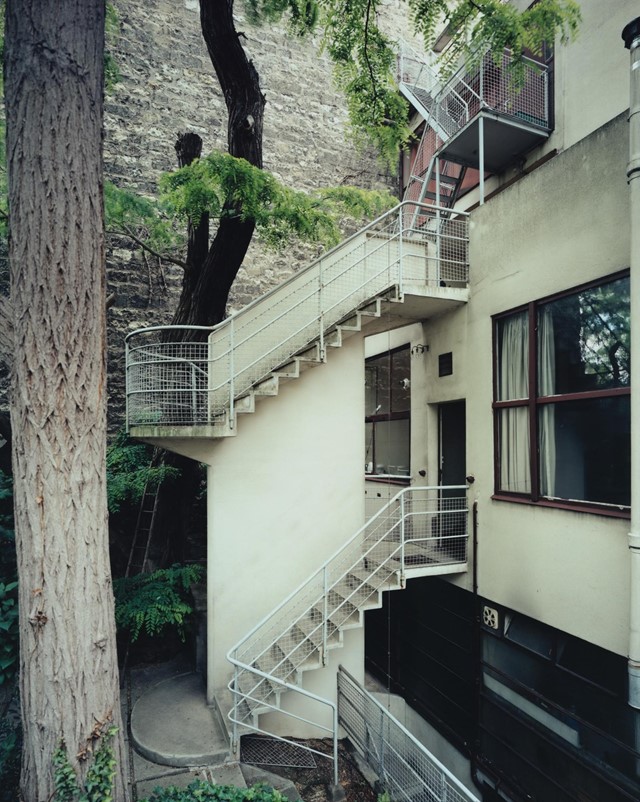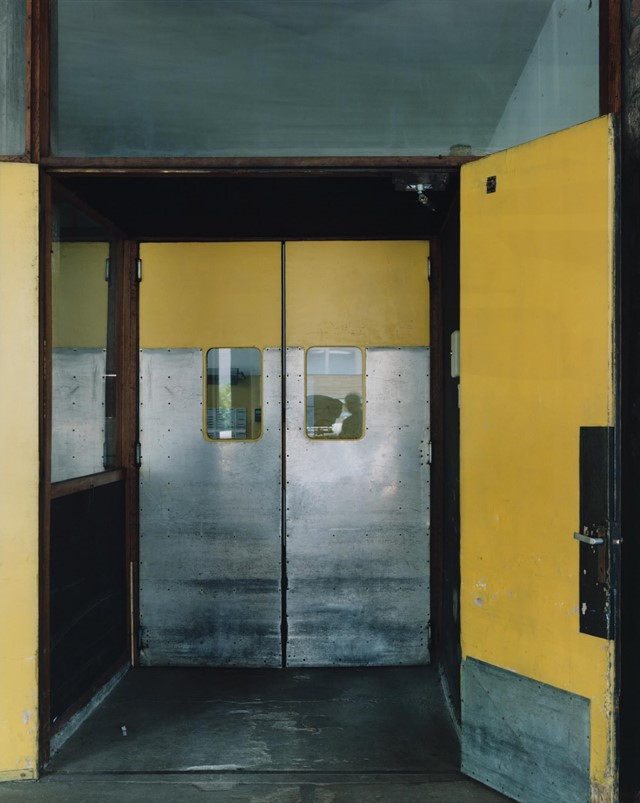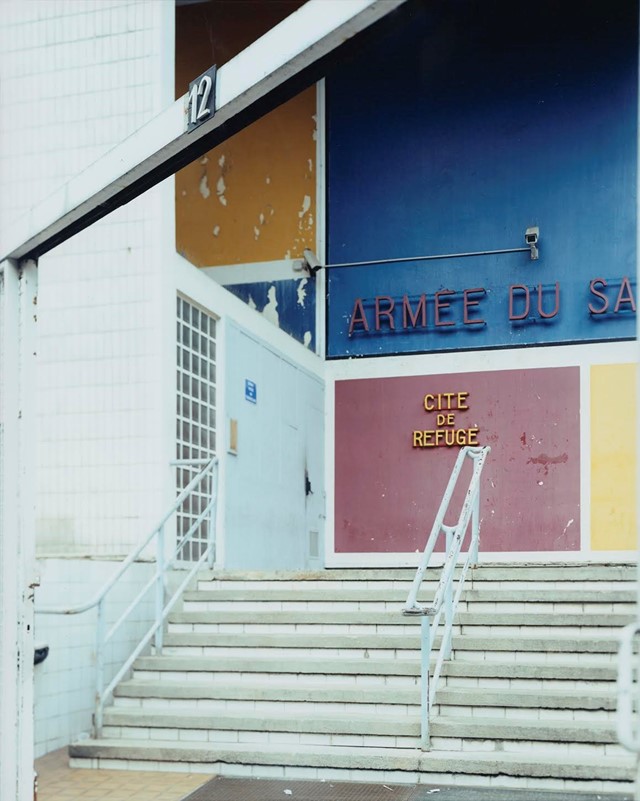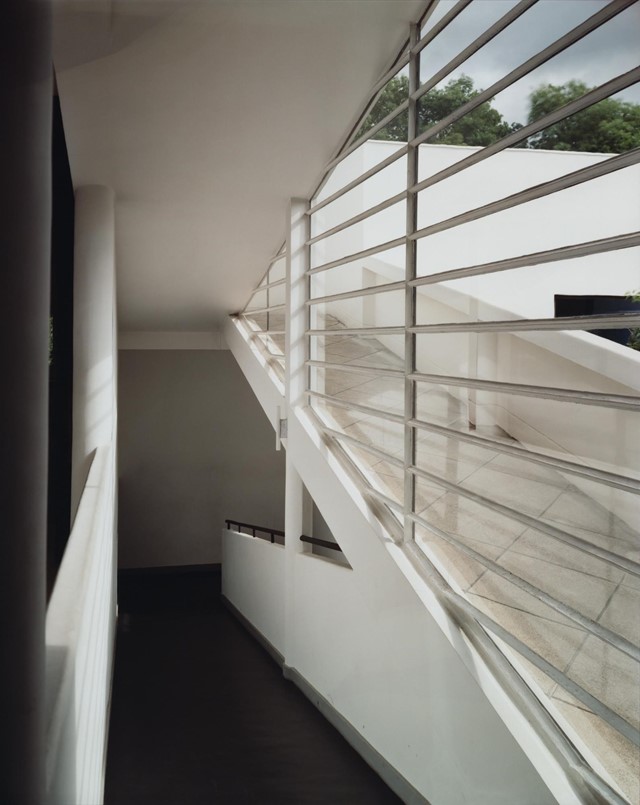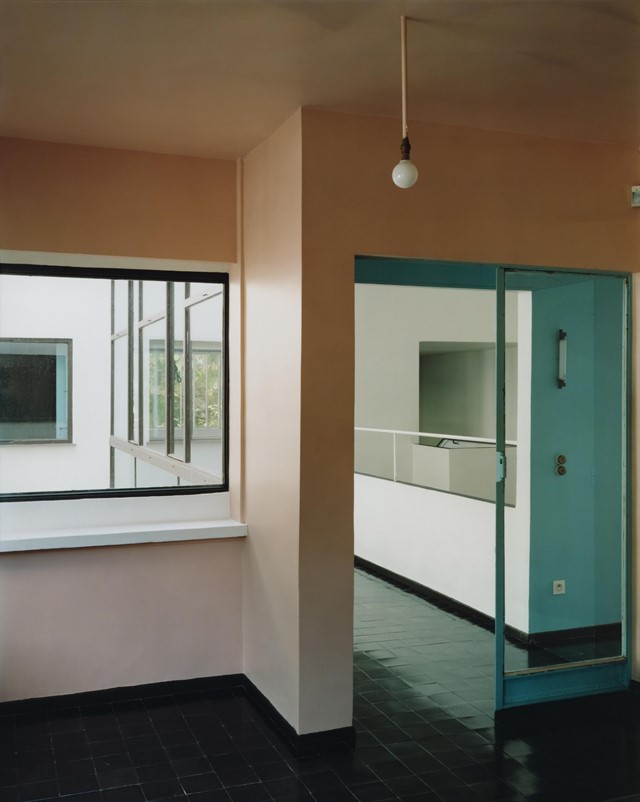Italian photographer Guido Guidi has held an enduring fascination with landscapes over the course of his 40-year career – and through his eyes, the category comprises not only rolling hills and photogenic horizons, but all of the tumbling down, the haphazardly erected and the quickly patched-up urban structures contemporary life necessitates. Perhaps because he began his working life as a student of architecture, or perhaps because his hometown of Cesena (in which he still lives today) presents a jarring paradox of a traditionally agricultural area intersected with a modern highway, he seeks out the transient juxtapositions with which urban life surrounds us, and captures them on camera to be referenced in the future, long after the structures themselves have been indelibly altered.
This search has taken Guidi from Italy to France, Poland and Spain, but it has also drawn him to the work of groundbreaking architects Carlo Scarpa and Mies van der Rohe. Perhaps most fascinating of all, though, in 2003 Guidi approached five lesser-known buildings by Swiss-French architect Le Corbusier and, capturing close-up shots of the materials and surfaces from which they each are constructed, revealed himself as a conscientious examiner of that man’s work.
The buildings themselves were diverse, Kehrer Galerie (which is currently exhibiting the resulting photographs) explains: ranging from “The Maison la Roche, which was built for banquier and collector Raoul La Roche both as a villa and to house his art collection,” and “The Maison Planeix,” which “originally served as a workshop for the sculptor Antonin Planeix,” through to “The Villa Savoye” which “was planned as a country retreat for the Savoye family” and “The Cité de Refuge,” which “has been used by the French Salvation Army since its completion. Finally, the only industrial building by Le Corbusier, “The Usine Duval,” which “used to be a knitwear factory”.
Here, however, these five architectural projects appear less as comprehensive structures and more as geometric shapes, dividing and crossing the landscapes in which they’re situated. What’s more Guidi’s photographs, with their intimate crops and sections of flat smooth, muted colours, are extremely aesthetically pleasing: a happy example of how effortlessly architecture, photography and geography can fuse in a single body of work.
Guido Guidi: Le Corbusier – 5 Architectures, runs until July 7, 2018 at Kehrer Galerie, Berlin.
